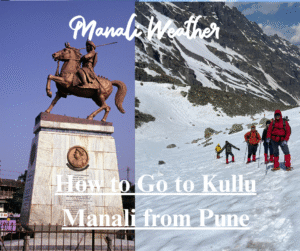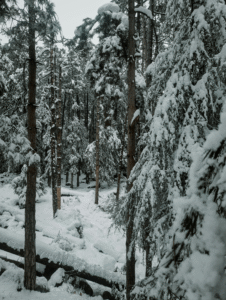Kasauli Height from Sea Level

Kasauli Height from Sea Level & Narkanda Height from Sea Level — Ski Slopes & Apple Orchards
Comprehensive guide to Kasauli elevation and Narkanda altitude — climate, skiing, orchards, comparison tables and practical tips for travelers.

Kasauli’s colonial ridge and Narkanda’s apple belt — two distinct Himalayan experiences shaped by elevation.
Kasauli Height from Sea Level: Introduction — why elevation matters
Altitude defines everything from temperature and vegetation to activity choices and how your body reacts. Kasauli — a quiet colonial-era ridge — sits at a moderate elevation that makes it a year-round escape from plains heat. Narkanda, higher up and famed for apple orchards and seasonal skiing, sits significantly taller. Understanding their height from sea level helps you choose the right season, pack smart, and get the most out of each location.
Quick facts: elevation snapshot
| Place | Approx. elevation | Why it matters |
|---|---|---|
| Kasauli (town / cantonment) | ≈ 1,800–1,927 m (≈ 5,900–6,320 ft). | Pleasant summers, short winters, colonial walks and viewpoints. |
| Narkanda (town / ski slopes) | ≈ 2,708–2,708 m (≈ 8,880 ft). | Skiing in winter, apple orchards in nearby Kotgarh & Thanedhar, highland panoramas. |
Elevation figures compiled from official & authoritative geographic/tourism sources (see references at bottom).
Kasauli Height from Sea Level — colonial charm at comfortable altitude
Kasauli sits along a gentle ridge of the Lower Himalayas. Most reliable sources list Kasauli’s elevation in the range of ≈ 1,800–1,927 metres above sea level, depending on which spur or cantonment area is measured. That height keeps summers pleasantly cool and winters mildly chilly — ideal for short escapes, easy hikes and heritage walks. (Local cantonment pages and tourism guides commonly cite the town’s elevation near 1,900 m.)
What Kasauli’s elevation means for visitors
- Mild climate: Summer daytime temps usually stay comfortable; nights can get cool.
- Short treks & viewpoints: Trails like Gilbert Trail and Monkey Point are gentle and accessible to most fitness levels.
- Heritage walkability: The small, linear town atop a ridge makes walking and light exploration easy.
- Occasional snowfall: Higher spurs may see light snow in winter months — rare but picturesque.
Practical tip: Kasauli’s elevation is high enough to feel “hill-station fresh” but not so high that most visitors require acclimatisation. Pack layers for evenings and a pair of good walking shoes for the mixed-stone paths and steps around viewpoints and temples.
Narkanda Height from Sea Level — ski slopes, apple country and high views
Narkanda is significantly higher than Kasauli: authoritative geographic resources list Narkanda’s elevation at approximately ≈ 2,708 metres above sea level. Nestled along the Hindustan–Tibet road (NH-5), it’s one of Himachal’s older ski destinations and also a gateway to rich apple-belt regions like Kotgarh and Thanedhar that were central to Himachal’s apple revolution.
Skiing in Narkanda
Narkanda’s slopes are gentle compared to high alpine resorts, which makes them ideal for beginners and school-level ski competitions. Winter months (December–February) bring regular snow and local ski events. The area around Hatu Peak and the open slopes near Narkanda are where most skiing and snow-play occurs.
Apple orchards & agriculture
While Narkanda itself is a high-altitude town, its proximity to Kotgarh and Thanedhar places it at the heart of Himachal’s historic apple belt. Apples were introduced by pioneers such as Satyanand Stokes and later flourished across these elevations. Visitors in late summer and autumn will find orchards heavy with fruit, seasonal harvest festivals, and farm-stay opportunities.
- Apple season: Harvest months (Aug–Oct) offer orchard visits, apple-picking and local produce markets.
- Highland crops & lifestyle: Apart from apples, local farming includes walnuts and stone fruits on varied spurs around Narkanda.
Because Narkanda sits above 2,500 m, visitors should expect colder nights and a noticeable temperature drop from day to night. That altitude also rewards photographers with dramatic Himalayan vistas when skies are clear.
Side-by-side: Kasauli Height from Sea Level vs Kasauli Height from Sea Level(elevation & experience)
| Aspect | Kasauli | Narkanda |
|---|---|---|
| Typical elevation | ≈ 1,800–1,927 m — comfortable hill-station altitude. | ≈ 2,708 m — higher alpine feels and regular winter snow. |
| Best for | Heritage walks, easy treks, family getaways. | Skiing, orchard visits, mountain vistas and adventure. |
| Accessibility | Road access from Chandigarh/Delhi; nearest rail at Kalka. | Road access from Shimla/Aut; closer to NH-5 (Hindustan–Tibet road). |
| Seasonal notes | Year-round tourism; peak April–June & Sept–Nov. | Ski season Dec–Feb; apple harvest Aug–Oct; great for spring & autumn too. |
Packing & altitude tips (smart travel)
- Layered clothing — nights at 2,700 m can be much colder than days.
- Sturdy walking shoes for hillside cobbled paths (Kasauli) and snowy slopes (Narkanda in winter).
- Sun protection — UV intensity rises with altitude (sunscreen & sunglasses).
- Hydration & rest — though not extreme altitude, avoid sudden exertion if you feel unwell.
- Local check — confirm road & weather status before driving to high passes or ski slopes.





1 thought on “Kasauli Height from Sea Level”